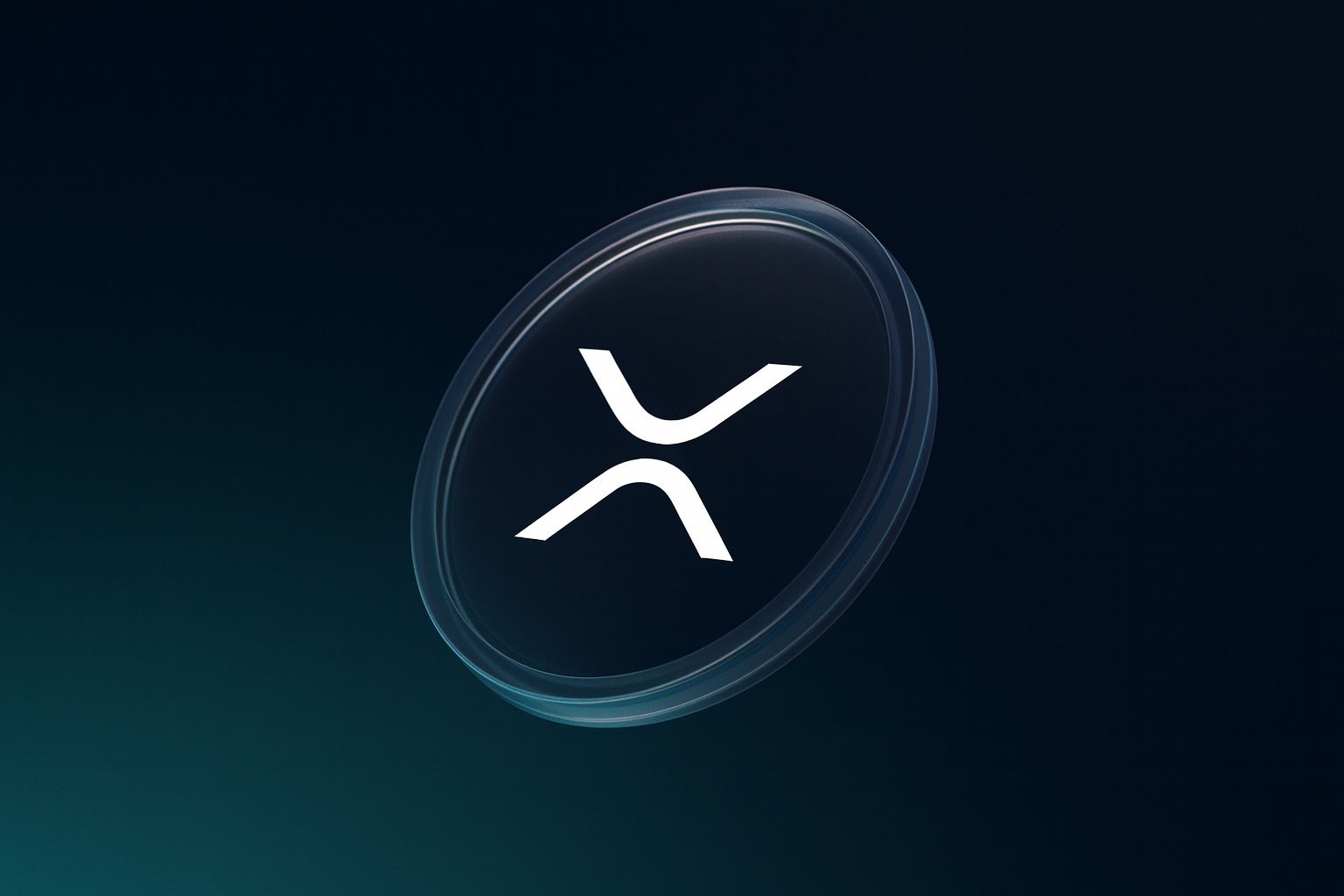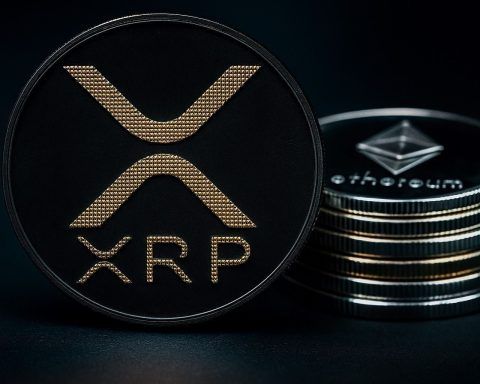- Current Price & Market: XRP trades around $2.40 (October 12, 2025) with a market cap ≈$144 billion [1], ranking it the world’s #3 cryptocurrency behind Bitcoin and Ethereum [2]. Its circulating supply is ~59.9 billion XRP [3]. This price is up roughly +38% in 2025 and +440% year-over-year (from ~$0.50 in Oct 2024) [4].
- Regulatory Clarity: In Aug 2025 the U.S. SEC settled its long-running lawsuit with Ripple. Ripple will pay a $125 million fine, but importantly XRP was affirmed not to be a security in its public sales [5]. This victory removed the “dark cloud” over XRP [6]. U.S. exchanges (Coinbase, Kraken, etc.) immediately relisted XRP [7] and institutional interest surged – multiple firms filed for spot XRP ETFs following the settlement [8].
- ETF Catalyst: Several major asset managers (Grayscale, WisdomTree, Franklin Templeton, etc.) have submitted SEC filings for spot XRP exchange-traded funds [9]. Approval deadlines fall in mid-to-late October 2025 [10]. Market odds are extremely high – Bloomberg analysts estimate ~100% chance of at least one XRP ETF getting approved [11], and even a single ETF is expected to “open the floodgates” of institutional money [12]. (Note: a brief U.S. government shutdown has stalled SEC reviews [13], but regulators aim to decide by late October [14].)
- Recent Volatility: Early Oct 2025 brought wild swings. A sudden U.S.–China trade shock (President Trump’s announcement of 100% tariffs on Chinese goods) triggered a crypto flash crash [15]. In minutes, XRP plunged from ~$2.77 to a low of $1.64 (about a 40–41% drop) [16] [17], liquidating hundreds of millions in leveraged positions. CoinDesk reported $150M+ in XRP futures were wiped out on that news [18]. By October 11, however, XRP sharply rebounded to ~$2.47–2.49 as buyers stepped in [19]. Overall, the coin’s recent 24h swings have been among the largest of 2025.
- Whale Activity: On-chain data show large holders moving massive amounts of XRP. For example, one whale sold ~160 million XRP (~$480M) in early October [20], and roughly 320 million XRP (~$950M) was transferred to exchanges overall [21] – classic signs of potential sell pressure. CryptoQuant’s analyst Maartunn noted “selling pressure persists” in XRP [22], while trader CryptoOnchain warned the chain data “strongly suggests whales are positioning for a significant sell-off” [23]. These moves helped knock XRP back below its key $3.00 level after the mid-week sell-off.
- Ripple Developments: Ripple itself has been busy. The firm applied for a U.S. banking charter (decision expected Oct 2025) [24] and launched a new dollar-backed stablecoin (RLUSD) on the XRP Ledger [25]. Notably, RLUSD “burns” small amounts of XRP on each transaction [26], directly tying stablecoin demand to XRP demand. Ripple also forged new banking and payment partnerships and won a London fintech award for its cross-border tech [27]. Its On-Demand Liquidity (ODL) remittance network shows rising usage in Asia (e.g. Japanese banks like SBI), providing an organic demand floor for XRP [28]. Altogether, these innovations bolster confidence in XRP’s long-term use case.
- Market Sentiment: After the SEC win, sentiment has turned broadly bullish. Many retail traders are “diamond-handing” XRP in expectation of a breakout. One CoinDesk analyst quipped that until a genuine breakout occurs, “talk is cheap; the market wants proof” of further gains [29]. Crypto lawyers note that BTC and ETH currently have a “market advantage” from existing spot ETFs, whereas XRP is “struggling to stay above $3” without one [30]. In other words, Bitcoin and Ethereum have ridden ETF-driven momentum in October, while XRP’s fate remains tied to its own catalysts (legal clarity, adoption, etc.).
- Analyst Forecasts: Experts’ price targets vary wildly. On the bullish side, Standard Chartered projects XRP could reach ~$5 by end-2025 (and ~$12+ by 2028) if spot ETFs launch and institutional demand ramps up [31]. Several crypto analysts see a path to $4–$5 in the near term if XRP breaks resistance at ~$3.30–$3.70 [32] [33]. Some ultra-bulls envision even higher – e.g. Jake Claver (Digital Ascension) speculated $10–$13 by end-2025 (stretch $20–$25) under a “perfect storm” [34]. Conversely, seasoned trader Peter Brandt warns of a bearish outcome: he highlighted a descending triangle and said XRP “is on my list of short candidates,” with a break below support potentially sending it down to ~$2.20 [35]. Most analysts agree that XRP must decisively clear about $3.30 and $3.70 to confirm a resumed uptrend [36].
- Technical Outlook: Chart watchers note key technical levels and patterns. Short-term support has formed around ~$2.80 (multiple bounces there) [37]. A CoinDesk study points to resistance at ~$3.05 [38] (the October 6 high), with potential upside targets of $3.65–$4.00 if buying continues [39]. On two-hour charts, XRP has formed a bullish “higher lows” base around $2.40–$2.50 (see chart below) even as momentum (RSI) dipped near oversold [40]. However, the coin has yet to break the small downtrend from its July peak ($3.66). Compared to Bitcoin and Ethereum, XRP underperformed in recent rallies – for example, during the early Oct “Uptober” rally XRP/USD rose only ~+5% while Bitcoin soared +10% (new ATH) [41]. In fact, during that week XRP lost ground versus BTC/ETH (XRP/BTC fell ~3.8%, XRP/ETH down ~7%) [42], highlighting that XRP needs its own catalysts (like an ETF) to regain leadership.
Illustration: The XRP (Ripple) token in front of U.S. currency – reflecting XRP’s role as a bridge between crypto and traditional finance [43] [44].
Chart: XRP/USD 2-hour price chart (Coinbase) with Fibonacci retracement and RSI. Note the sharp drop from ~$2.77 to $1.64 on Oct 10 (shown on left), then the rebound to ~$2.47 by Oct 11 [45]. Recent higher lows and an RSI divergence (bottom) hint at a forming base [46].
Outlook – Short-, Medium-, and Long-Term
Short term (weeks): The coming SEC decisions and market catalysts will likely dictate XRP’s near-term path. If a spot XRP ETF is approved or if technical breakouts occur, XRP could quickly run toward the mid-$4s or even $5 (as many traders anticipate) [47] [48]. Positive crypto-wide momentum (Bitcoin and Ethereum rising) could lift XRP as well. Conversely, failure to break key resistance soon (especially around $3.30) could leave XRP range-bound around $2.50–$3.00. In that case, a drop toward ~$2.50 (or worse, mid-$2s) is possible if profit-taking resumes [49].
Medium term (months): By late 2025 (1–3 months out), fundamentals could shift markedly. If ETFs clear and institutions flow in, many forecasts see XRP in the $5–$6 range or higher by year-end [50] [51]. Standard Chartered’s target (~$5) and others’ $4–$6 outlooks presuppose solid adoption and crypto-friendly conditions. However, if macro headwinds re-emerge (higher rates, risk-off markets) or if regulatory worries creep back (beyond the Ripple case), XRP could consolidate in the $2.50–$3.50 band. Traders will be watching closely how XRP reacts around the $3.00 level after October’s decisions.
Long term (2026+): Over multiple years, XRP’s fate hinges on its real-world use and broader crypto cycles. Optimists envision XRP capitalizing on Ripple’s growing cross-border usage and new financial products. In a strong bull market, some models have XRP back in double-digit territory (e.g. Standard Chartered’s ~$12 by 2028 [52]). A very bullish outcome (extensive global adoption plus multiple ETFs) could even push XRP to $10–$20+ by 2030, matching past peaks of crypto leaders. Skeptics counter that these forecasts assume a “perfect storm” – sustained institutional inflows, broad stablecoin/regulatory clarity, and XRP carving out major market share. Until those high bars are met, many caution that XRP may instead grind sideways or see corrections. In any case, the next few months (legal decisions, technical breakouts) will be critical for setting XRP’s trajectory.
Sources: Recent prices and on-chain data are drawn from CoinMarketCap and FXLeaders [53] [54]. The above narrative relies on reports from Reuters, CoinDesk, CoinMarketCap, and TS2.tech, among others [55] [56] [57]. Expert commentary and analysis (quoted above) come from CryptoQuant, CoinDesk, and prominent traders [58] [59] [60]. All information is current as of mid-October 2025.
References
1. coinmarketcap.com, 2. www.reuters.com, 3. coinmarketcap.com, 4. ts2.tech, 5. www.reuters.com, 6. ts2.tech, 7. ts2.tech, 8. ts2.tech, 9. ts2.tech, 10. ts2.tech, 11. ts2.tech, 12. ts2.tech, 13. www.tradingview.com, 14. ts2.tech, 15. www.coindesk.com, 16. www.coindesk.com, 17. ts2.tech, 18. www.coindesk.com, 19. www.coindesk.com, 20. ts2.tech, 21. ts2.tech, 22. ts2.tech, 23. ts2.tech, 24. ts2.tech, 25. coinmarketcap.com, 26. coinmarketcap.com, 27. ts2.tech, 28. ts2.tech, 29. ts2.tech, 30. ts2.tech, 31. ts2.tech, 32. ts2.tech, 33. ts2.tech, 34. ts2.tech, 35. ts2.tech, 36. ts2.tech, 37. ts2.tech, 38. www.coindesk.com, 39. www.coindesk.com, 40. www.fxleaders.com, 41. ts2.tech, 42. ts2.tech, 43. coinmarketcap.com, 44. www.reuters.com, 45. www.coindesk.com, 46. www.fxleaders.com, 47. ts2.tech, 48. ts2.tech, 49. ts2.tech, 50. ts2.tech, 51. ts2.tech, 52. ts2.tech, 53. coinmarketcap.com, 54. www.fxleaders.com, 55. www.reuters.com, 56. www.coindesk.com, 57. ts2.tech, 58. ts2.tech, 59. ts2.tech, 60. ts2.tech










